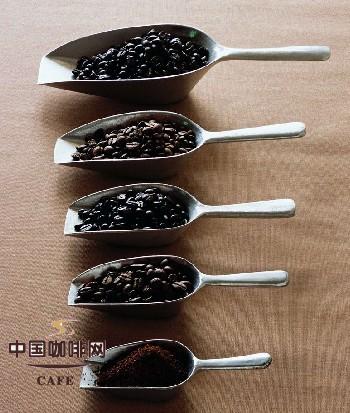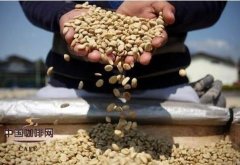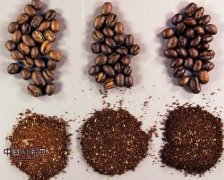Time / temperature curve of things to pay attention to in coffee roasting

Time / temperature curve
When baking, it is recommended to record the corresponding temperature at regular intervals, with intervals ranging from 30 seconds to 60 seconds according to personal habits. In addition to temperature, records such as the start and end time of the first and second explosions are also indispensable. According to these data, we can sort out a 'time-temperature' corresponding curve, which is an important reference data for baking. as long as you control the firepower, you can change the slope of the curve (that is, the rate of temperature rise). On the other hand, the coffee beans baked with different slopes have more flavor-even the same batch of beans. So if you are not satisfied with the taste of this baking, you can according to the recorded temperature-time qu
The last procedure of baking is forced cooling, and the simplest thread is modified slowly to the taste you are most satisfied with.
Experience tells us that when the baking time is lengthened with less firepower, the taste will be softer and many of the water chestnuts will be sharpened, while the shorter baking time will have excellent aroma performance and the features will be more easily highlighted. In fact, there is no so-called absolutely correct baking time, the choice depends entirely on personal preferences, as long as baking a few times to find out the most suitable time for you.
Forced cooling
The way is to blow with an electric fan (remember which gear is the strongest) and blow away the remaining bean skins while carrying out forced cooling, killing two birds with one stone. Remember not to let the coffee beans cool naturally, or they will taste poor.
In addition to simply blowing with an electric fan, if the baking quantity is large, you can also cooperate with the sprayer, using the sprayer to spray some water to help cool down, but in this way, you must pay attention to the amount of water, too much water makes the coffee beans wet and easy to mildew. In fact, unless there is a lot of baking at one time, the electric fan is enough. In fact, large bakeries also use air conditioners to cool them, which avoids the problems caused by water cooling.
After the coffee beans are completely cooled, even if the whole baking process is completed, usually the roasted coffee beans will be about doubled in volume, and the weight will be reduced by 15% to 20%. After the roasting is completed, the roasted coffee beans are properly preserved. Take it out at the right time and review your baking results by the way.
Let the flavor develop and mature-- raising beans
I don't know if you have noticed that after putting the roasted fresh coffee beans into a sealed can, the lid will pop open the next day with a bang, as if there was a pressure to push the lid out. That is the accumulation of carbon dioxide, another product of baking beans. Roasting one kilogram of coffee beans will produce 12 kilograms of carbon dioxide, and the coffee beans will continue to emit carbon dioxide after baking. This is the source of pressure in the sealed jar, and this discharge will last for another two or three days. While emitting carbon dioxide, the flavor of coffee beans is also developing. When coffee beans emit about the same amount of carbon dioxide, the flavor is ripe enough to taste.
Therefore, do not rush to drink the coffee beans that have just been baked, because at this time the coffee will not be able to show its own characteristics because of its immature development. You should keep the coffee beans in a proper environment for three or four days before tasting them. Only in this way can you enjoy the complete flavor of the coffee. We call this action 'bean cultivation'. In fact, in our experience, the growing period of many coffee beans is nearly a week, or even more than ten days, before which the taste may not be complete. Of course, you can also ignore the matter of growing beans and cook them every day after baking. After a few cycles, you can better understand the flavor development of the coffee beans.
Important Notice :
前街咖啡 FrontStreet Coffee has moved to new addredd:
FrontStreet Coffee Address: 315,Donghua East Road,GuangZhou
Tel:020 38364473
- Prev

What is the difference between Arabica and Robusta's different coffee beans?
In many places where coffee is sold, it is not difficult to find words like "100% Arabica". Even canned coffee appears in a style called "XX Arabica Coffee", which makes one wonder: what is "Arabica Coffee"? In fact, Arabica is the name of the coffee tree variety (species). Arabica (Coffea Arabica) and Robusta (Cof)
- Next

When coffee stops roasting basic knowledge of coffee roasting
When do you want to stop baking? It can be judged from the following points: 1. Coffee bean color: because coffee beans show different colors when roasted to different degrees, color becomes the most commonly used basis for baking depth. This method can be applied to most coffee beans, but some coffee beans are special. For example, the color of Kenya beans is much darker than ordinary coffee beans.
Related
- Beginners will see the "Coffee pull flower" guide!
- What is the difference between ice blog purified milk and ordinary milk coffee?
- Why is the Philippines the largest producer of crops in Liberia?
- For coffee extraction, should the fine powder be retained?
- How does extracted espresso fill pressed powder? How much strength does it take to press the powder?
- How to make jasmine cold extract coffee? Is the jasmine + latte good?
- Will this little toy really make the coffee taste better? How does Lily Drip affect coffee extraction?
- Will the action of slapping the filter cup also affect coffee extraction?
- What's the difference between powder-to-water ratio and powder-to-liquid ratio?
- What is the Ethiopian local species? What does it have to do with Heirloom native species?

